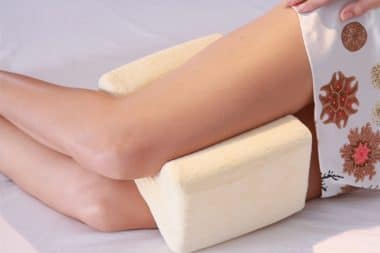A sprained ankle is most likely something you’ve experienced before. They are so common that researchers estimate that over 20,000 happen each and every day. And you don’t have to be an athlete to experience a sprained ankle. In fact you don’t even have to be doing anything that resembles activity. Just the act of going up and down stairs or walking over an uneven surface puts your ankles at risk for being strained or sprained.
Sounds a bit like you won’t get through your day without eventually succumbing to the pain of a sprained ankle. But that’s not true either. Although common, most sprains are minor and require very little attention before the body heals itself and you are on your way back to normal activity.
When the ankle is sprained what is actually happening is that the ligaments that support the ankle and hold it into place are torn or stretched. These ligaments hold the ankle and foot attached to the leg bone. They help you to walk straight, quickly and with confidence. But when you twist your ankle walking over an uneven surface or tripping down the stairs or during an athletic performance you stretch or tear those ligaments beyond their normal position.
The most common stretch or tear is an inversion sprain when your foot rolls inward and the outside of the ankle is stretched and torn. An eversion sprain (foot rolling outward) is much less common but has a high correlation with a broken bone in the ankle. In either case the symptoms are similar.
The person who suffers from a sprain will find the ankle swells, feels hot, is tender to walk on but not tender to touch, bruising and you may not be able to bear weight on the foot. The amount of pain you have and function you lose will depend on the severity of the injury to the ligament.
Your doctor will manipulate your foot and ankle to determine which ligaments are torn and this process may be painful. The doctor will also probably x-ray the ankle to determine if there are any broken bones which requiring further treatment. If the swelling, bruising and pain are minimal the physician may chose not to x-ray the foot.
Once the doctor has fully examined the injury and diagnostic x-rays they’ll be able to give you a full explanation of the grading of the sprain to your ankle. The grade of your ankle sprain will determine the type of treatment and recovery that will be necessary to help your ankle fully recovery from this trauma.
A grade one sprain has very minimal microscopic tears to the ligaments that support the ankle. There is minimal tenderness and swelling and you may not even see the doctor for a slight sprain.
A grade two ankle sprain involves complete tears of some but not all of the collagen fibers in the ligament. There is moderate tenderness, swelling and impairment to walking. The person will experience a decreased range of motion and may even experience some instability in the ankle. Grade 1 and 2 ankle sprains are the most common experienced by athletes and non-athletes.
A grade 3 ankle sprain involves a complete tear or rupture of the ligament that supports the ankle. These are more commonly inversion sprains and may also involve a break in the bone. The person will experience significant tenderness, heat and swelling with instability of the joint. They won’t be able to place weight on the foot and may even require surgical reconstruction to regain the ability to walk well again.
When a person presents to the doctor with a Grade 1 ankle sprain he is much less likely to order an x-ray to check for bone damage then if the person presents with a Grade 2 or 3 sprain. Ankle sprains may be common but they also restrict the activity levels of those who suffer from them. This can mean lost work or school time as well as lost training if the person was an athlete. And once an ankle has suffered a Grade 2 or 3 sprain it is much more likely to be injured again unless there is significant retraining and strengthening done to support the joint.
Treatment
Treatment for sprained ankles isn’t necessarily complex or difficult but it is time consuming and requires commitment. Sprained ankles are graded in their severity. Those who suffer a Grade 1 sprain will not have the required physical therapy and strength training necessary to return to normal activity that someone who suffers from a Grade 2 or 3 sprain.
The grade of the sprain is dependent on the amount of tearing that the collagen tissue in the ligament suffers. A complete tear requires the most rehabilitation while a mild tear (Grade 1) may not require more than rest.
In any case you should consult your doctor to determine the grade of your sprain and the recommendations that they and your physical therapist will make to get you back to working order. The treatments outlined here are only to help you make an informed decision with your doctor and to give you help to recover as quickly as possible.
Your doctor may also advise you to take some anti-inflammatory medications to help with the pain and discomfort. Over the counter ibuprofen works well for this situation unless you have a Grade 3 tear that may require surgery.
The basic plan behind a muscle or ligament pull or strain is RICE. Rest, Ice, Compression and Elevation. These components are the mainstay of immediate treatment while the rehabilitation will be structured around a more individualized plan to help you return to your normal activities. For instance, if your injury happened while running the quarter mile you may undergo a significantly more intense physical therapy routine than if your normal activities included daily living skills such as stair climbing and walking.
But let’s start with Rest — probably the hardest factor for all involved. This means — Do No Walk On It! It doesn’t mean limp, or hop on the good foot or even walk slowly off the heel or toe. It means to rest the ligaments and muscles that were stretched and torn and let your body start to heal. While resting you should have your ankle elevated above the level of your heart. This will help the swelling to stay down and will then help your ankle to heal faster. The larger the amount of swelling the harder it is for the muscles and ligament to rebuild themselves and the longer your rehabilitation and recovery period.
While your foot is resting, elevated above the level of your heart, place ice packs on it for 15 minutes every hour. The ice also helps to decrease the swelling in the soft tissue and decreases the time you’ll need to recover. Even if you are only able to put your foot up for 24 hours before needing to return to work or school that 24 hours will give your body time to recover that you can never replace.
And, because you can’t stay seated, with your foot elevated, for 24 hours you’ll want to use compression to keep the swelling down and help to support the joint. Compression can be accomplished using a standard ace wrap or ankle brace sold specifically for this reason. Don’t ignore any of these first four steps or you’ll find your rehabilitation time has just doubled in time. The more you can rest the ankle and keep the swelling to a minimum the less time you’ll spend on crutches, in braces or in rehabilitation.
If you had a Grade 2 sprain then you may require an immobility device for 2 —3 weeks to allow for proper healing and treatment for sprained ankle. In a Grade 3 sprain you may need a short leg cast for several weeks to allow for proper healing before you are able to begin strengthening exercises and physical therapy. During physical therapy your practitioner will evaluate how unstable and weak your ankle is compared to your other ankle. If you leave this instability or weakness you will actually increase your risk of reinjury to the injured ankle as well as injury to the knee or hip of the good leg as it attempts to compensate for the weakness.
Therapists will give you exercises to perform at home 2-3 times per day, depending upon the type of exercise, as well as icing or heat depending upon your injury. Follow the rehabilitation and you’ll be back to work, school and athletics quickly. For a Grade 1 injury that time may be 1-3 weeks; a Grade 2 or 3 injury may take a month or slightly more before walking, swimming, running or rowing is allowed. For sports that require lateral support and twisting such as basketball, soccer or football, it may be a couple of months before the ankle is ready to work — even with a strong brace.






Reply